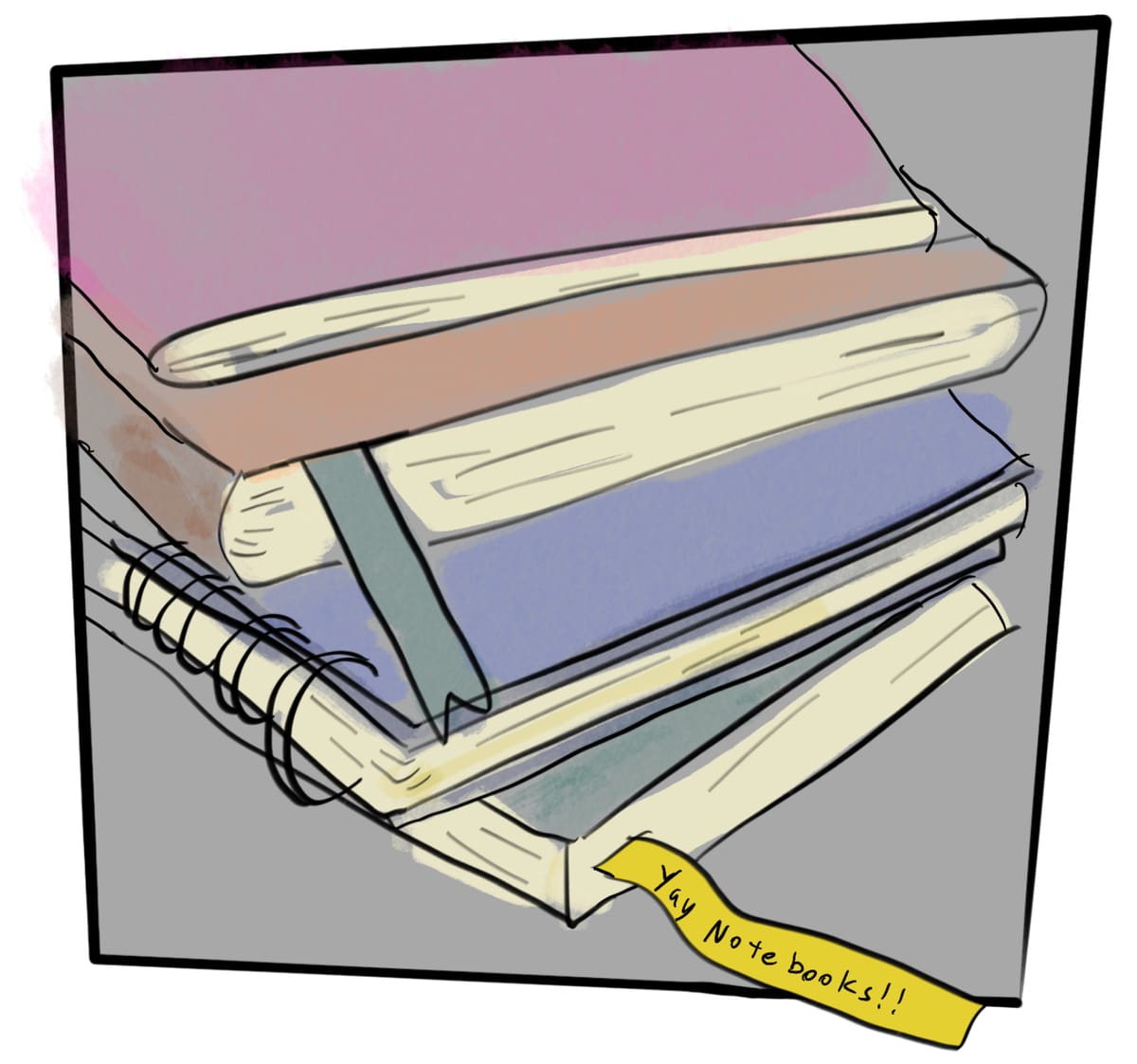Pass the notebook

The wheel. Fire. The Internet. These are often cited as humanity’s greatest inventions. I think we’re undervaluing paper. If someone asked me what the greatest inventions we’ve made are, I’d add paper to the list. And add a caveat to the Internet. The un-enshitified Internet, but that’s another post all together :)
I listened to this episode of The Art of Manliness podcast, and immediately had a fun idea.
Roland Allen the guest and author of the book The Notebook, A History of Thinking on Paper mentions several different kinds of notebooks people have kept over the centuries.
The Commonplace Book is a notebook format in which people add quotes and ideas and other interesting things they come across and categorize and organize them with a rigorous approach. The goal is to look through them and find things that can spark your own creativity.
Some people do this on index cards. Search for author Ryan Holiday’s Commonplace, and you’ll find a wealth of info on how this writer uses these techniques.
Friend, I’ve started and abandoned no less than three commonplace books. There’s too much structure for my personality type and I’m a Forager not a Librarian.
The Zibaldone notebook format is more similar to what we in the US would call a diary. You add your notes, ideas, maybe things you’re seeing and reading, doodles, cutouts from other paper based things, whatever. Most folks kept these as recordings of their days.
This article refers to a Zibaldone as the 13th century answer to tumblr. Gather round kids and let crazy uncle Chad tell you about a blog platform called Tumblr we used back in the day.
One of my commonplace notebooks already looks and feels like this. So I’m going to rip off the label and retitle it from Commonplace to Zibaldone.
Bee tee dubs, Zibaldone translates as “a heap of things” perfect for my Foraging instincts.
The Friendship Book was a neat way to record your relationships. From the transcript of the podcast:
… and then the Dutch got hold of it, and this is around the year 1600 or so, and they made it into something much more fun, which was the Friendship Album. So it wasn’t just for students and professors anymore, it was for anyone. And when you went out for dinner with new people, you would take your friendship book, your album Amicorum in Latin, and if you met someone interesting, you would whip it out and say, it’s so nice to meet you.
Could you dedicate yourself into my book? You would give them a page of your book, they would write down a little prayer again, or a snippet of poetry, or a motto of proverb, or they would do a sketch of something and hand it back, and that would be a little record of your friendship.
To me, it feels like the Friendship book was a sort of social Zibaldone. Or in today’s terms and models, like any of my txt threads with a friend.
The idea
Like I said at the top (way to bury the lede), I had this idea right after I listened to the episode. Why not combine the Zibaldone and the Friendship book?
I picked up one of the many blank notebooks I have lying around (feature not a bug). I described the idea on the first page, added a quote I like, and added a question. Made a doodle, put some stickers on it and sent it via mail to my friend Mike. If he adopts the idea, he’ll add stuff, and send this to our friend Kamal. And if Kamal buys in, he’ll add stuff, and send it back to me. Then I’ll repeat the cycle. It could be a fun way to keep our relationships and friendships active in an analog, slow, snail mail way.
I did the same for my friend Bob, too. Same thinking from above applies.
I didn’t tell them about this at all in advance. I hope they have a nice pleasant surprise ahead of them.
In conclusion
There isn’t one format to rule them all. Pick up whichever writing implement and paper product is closest to you, and write something. Keep going if it pleases you. Organize it or don’t if that pleases you too. Keep it for yourself or share with a friend.